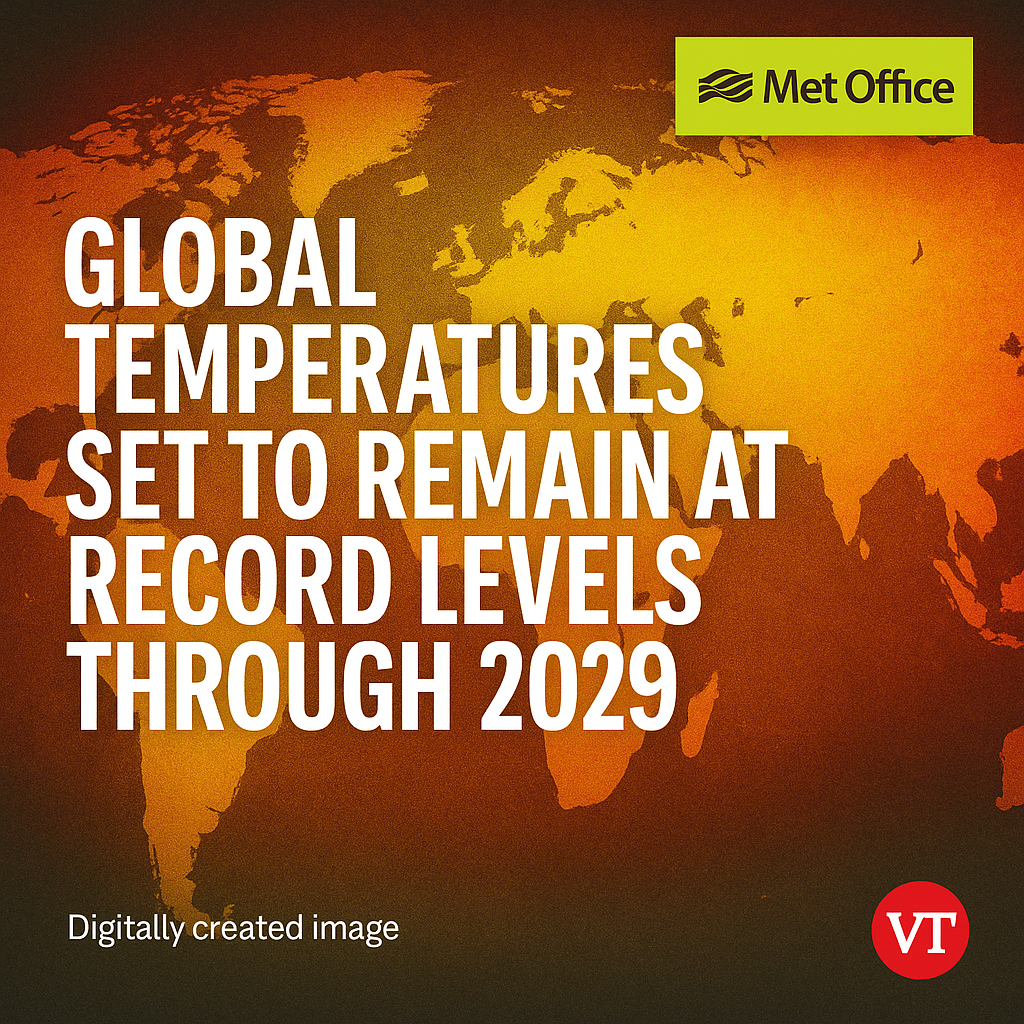- There’s an 86% chance that global temperatures will exceed 1.5°C above pre-industrial levels in at least one year between 2025 and 2029.
- 80% likelihood that at least one year in this period will surpass 2024 as the warmest year on record.
- Arctic regions are projected to continue warming faster than the global average.
- Predicted precipitation patterns suggest wetter conditions in the Sahel, northern Europe, Alaska, and northern Siberia, and drier conditions over the Amazon.
- Long-term warming (averaged over decades) remains below 1.5°C, but the trend indicates increasing climate risks.
The UK Met Office, in collaboration with the World Meteorological Organization (WMO), has released a new climate forecast indicating that global temperatures are expected to remain at or near record levels over the next five years. This projection underscores the ongoing challenges posed by climate change and the urgency for global mitigation efforts.
According to the report, there’s an 86% chance that the global mean near-surface temperature will exceed 1.5°C above pre-industrial levels in at least one year between 2025 and 2029. Furthermore, there’s an 80% likelihood that at least one year in this period will surpass 2024 as the warmest year on record.
The report also highlights regional variations in climate impacts. For instance, Arctic regions are projected to continue warming faster than the global average, leading to accelerated melting of ice sheets and glaciers. Predicted precipitation patterns suggest wetter conditions in the Sahel, northern Europe, Alaska, and northern Siberia, while the Amazon region is expected to experience drier conditions.
While the forecasted short-term exceedance of the 1.5°C threshold does not constitute a breach of the Paris Agreement—which focuses on long-term averages—it signals an alarming trend. The agreement aims to limit global warming to well below 2°C, preferably to 1.5°C, compared to pre-industrial levels. Exceeding these thresholds increases the risk of severe climate impacts, including extreme weather events, sea-level rise, and loss of biodiversity.
The Met Office and WMO emphasize the importance of immediate and sustained reductions in greenhouse gas emissions to mitigate these risks. Without significant action, the world is likely to experience more frequent and severe climate-related events, affecting ecosystems, economies, and communities worldwide.
With inputs from the UK Met Office and the World Meteorological Organization
A global media for the latest news, entertainment, music fashion, and more.















